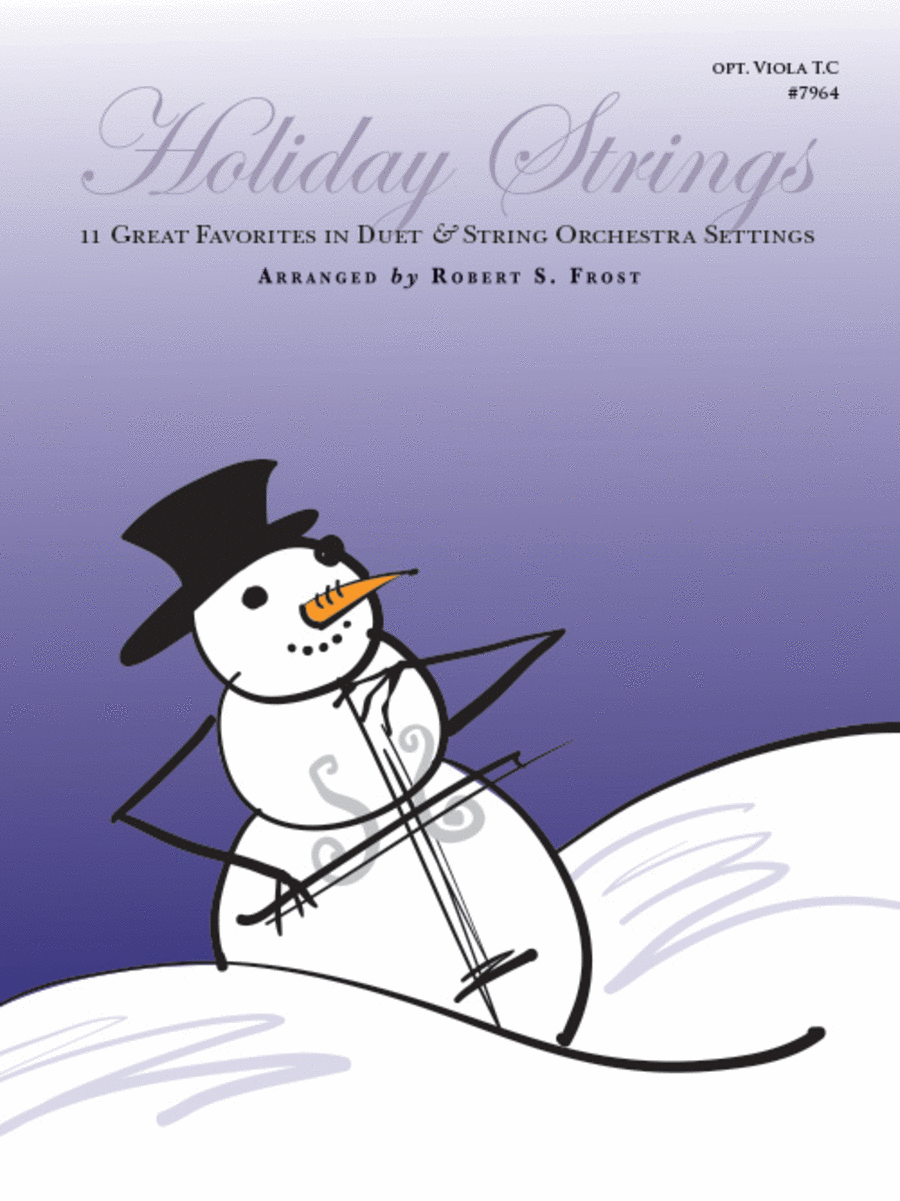Holiday Strings - opt. Viola T.C.$6.95 - See more - Buy online Lead time before shipment : 1 to 2 weeks Viola T.C. - 1-2 SKU: KN.7964 Composed by Various. Arranged by Robert S. Frost. String Collection. Christmas. Individual part. Kendor Music Inc #7964. Published by Kendor Music Inc (KN.7964).UPC: 822795079647. This grade 1-2 collection contains eleven familiar holiday songs from divergent ethnic groups, each arranged in two performance formats: duet and string orchestra. These formats provide directors with versatility and variety in meeting the performance needs of beginning level string orchestras. In the duet arrangements each instrument has the melody line and a harmony (duet) line. In the string orchestra arrangements each instrument has two parts that follow standard instrumentation, allowing for various instrument combinations between upper and lower strings. The optional piano book includes both duet and string orchestra accompaniments that will strengthen the confidence and sound of ensembles of any size. Publisher : Kendor Music Inc.Level : 
Song List: Up on the Housetop We Wish You a Merry Christmas Silent Night O Come, All Ye Faithful Joy To The World Go Tell It On the Mountain God Rest Ye Merry Gentlemen Ding! Dong! Merrily on High La Pinata Ma'oz Tzur (Rock Of Ages) S'Vivon
|








